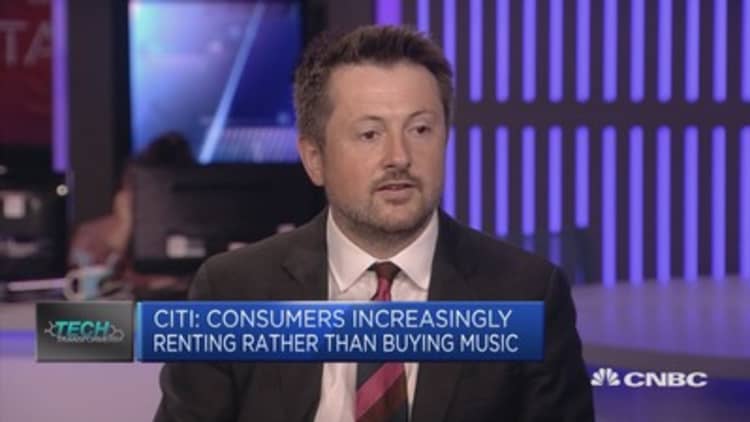It's no surprise that the rise of music streaming services like Spotify and Pandora have led to a decline in physical music sales. But according to a new report from Citi, it doesn't spell doom for the industry as a whole. Increasingly, musical artists are turning toward concerts and other live events as a way to bring in money, and last year the industry as a whole brought in $43 billion -- its highest in a decade.
Within the last 10 years physical sales have decreased 43% while digital ones have increased 56%. During that same time frame, concert revenue has spiked. Today, revenue from live events makes up nearly half of artists' total profits.
Aside from small theaters and indoor arenas, many artists are now taking their tours to football stadiums and adopting residencies at large venues in New York City and Las Vegas. Billy Joel, who has not released an album since 2001, played his 100th night at Madison Square Garden a few weeks ago. Starting in December, six-time Grammy award winner Lady Gaga will play 27 shows at the Park Theater in Las Vegas. The deal is reportedly valued at nearly $100 million.
According to Citi, last year a top 10 global tour generated an average of $180 million.
It hasn't only been concerts, either. Bruce Springsteen has been playing on Broadway almost every night since October 2017. According to Fortune, "Springsteen on Broadway" made over $40 million in its first five months.
Citi argues that these new consumer/musical artist trends will have a profound impact on the structure of the industry as a whole.
"First, we could see vertical integration. For example, concert promoters could merge with an existing distribution platform. Second, we could see horizontal integration. For example, existing distribution firms could consolidate. Third, we could see organic forms of vertical integration. That is, existing web-based distribution firms could organically morph into music labels (by targeting younger, less established artists). This would allow artists to capture more of music's value while allowing Internet-based music distributors to capture profit pools currently earned by the music labels," Citi analysts wrote in a note to investors on Tuesday.

Bjorn Niclas, co-founder of the blockchain-based music streaming service called Choon, also sees consolidation in the near future.
"There is less and less need for intermediate players," he said. "When you can use technology to bridge the gap between artists and fans, that just means that instead of using five different organizations to do it, I can just do it myself, for free, and instantly with a global reach."
Niclas aims to restructure the industry on a personal level. His company focuses on retaining a higher proportion of streaming royalties for artists.
"The rise of the streaming model has been very disadvantageous to artists but there is a misconception that there is not enough money being generated," he told Citi.
"The truth is that there is a ton of money being generated — it's just not making its way down to the artists as it gets funneled through various intermediaries such as record labels, publishers, and various performance and copyright collections societies."


